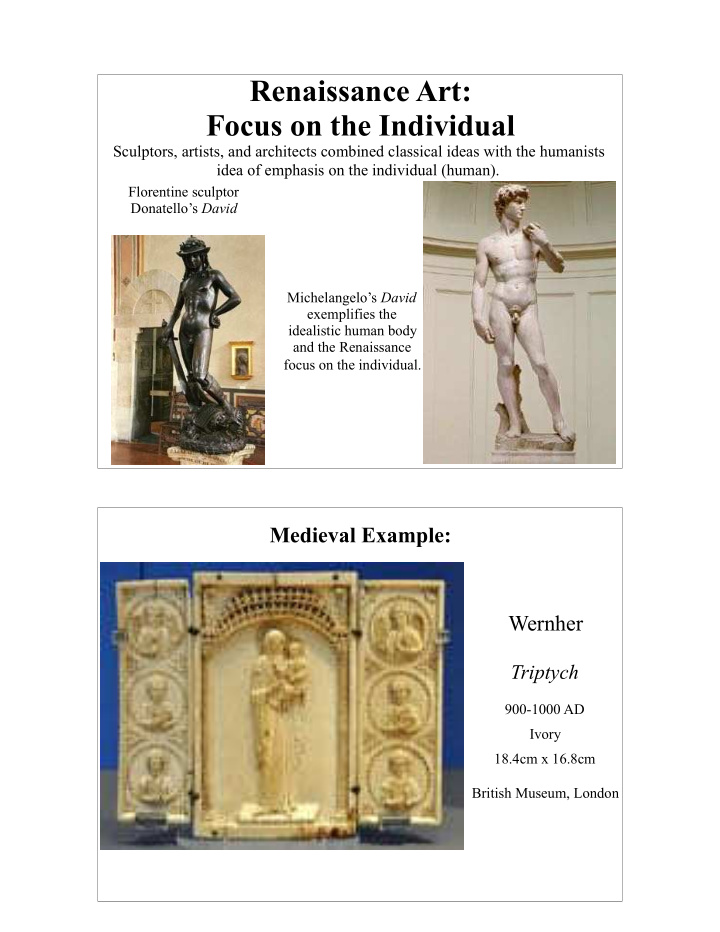



Renaissance Art: Focus on the Individual Sculptors, artists, and architects combined classical ideas with the humanists idea of emphasis on the individual (human). Florentine sculptor Donatello’s David Michelangelo’s David exemplifies the idealistic human body and the Renaissance focus on the individual. Medieval Example: Wernher Triptych 900-1000 AD Ivory 18.4cm x 16.8cm British Museum, London
Realism & Expression First nudes since classical times. Expulsion from the Garden Masaccio, 1427 Medieval Example: Giotto Ognissanti Madonna 1310 Tempera on panel 325 cm × 204 cm Uffizi Gallery, Florence
Classicism The first major revival of classicism occurred during the Renaissance. St. Peter’s Basilica (Vatican) Consecrated 1626 Michelangelo Architect Medieval Example: Cathedral of Notre Dame (Paris) Completed 1345 Multiple Architects
Detail and Perspective the art of Medieval Europe rarely had detailed backgrounds but during the Renaissance people became more interested in the world around them, landscapes and buildings began to show up in paintings. to a three-dimensional world onto the two-dimensional surface of a painting, Renaissance painters used a technique known as perspective the idea that converging lines meet at a single vanishing point and all shapes get smaller in all directions with increasing distance from the eye. Use of Light and Shadowing Chiaroscuro the use of strong contrasts between light and dark Sfumato Sfumato means “to tone down” or “to evaporate like smoke.” The most prominent practitioner of sfumato was Leonard da Vinci, who described sfumato as “without lines or Artemisia Gentileschi borders, in the manner of smoke or Judith Slaying Holofernes (1614–20) Oil on canvas beyond the focus plane.” Galleria degli Uffizi, Florence. Leonardo da Vinci Mona Lisa
Renaissance Art in Northern Europe Although Italian influence was strong, it should not be considered as merely an addition to Italian Renaissance art. Differences: Italian Renaissance: Northern Renaissance: change was inspired by change was driven by humanism religious reform wealthy merchant class kings & princes were were patrons of artists patrons of artists Characteristics of Northern Renaissance Art realism & naturalism focused on peasant life details of domestic interiors skilled in portraiture Jan Van Eyck, Rolin Madonna , c. 1435, Flemish, Northern Renaissance.
Recommend
More recommend